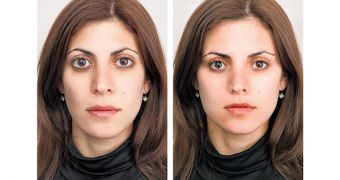Using a complex algorithm based on mathematical formulas deduced from the opinions of a number of persons watching photographs of human faces, four software developers from Tel Aviv University have created a software that adjusts the physical traits of people (their photos, actually) according to the preset beauty standards.
The study was developed based on the choices of 68 persons who picked up the best looking ones out of a large number of white people photos. Tommer Leyvand and his three colleagues arranged the obtained data related to beauty traits into 234 facial characteristics (like the lips-to-chin or forehead-to-eyes distances), which they condensed into a complicated algorithm. The software that they developed was designed in order to be able to recognize the features of each new face and select the ones that should be modified according to some specific, matching patterns, as well as the extent to which that should be done. In contrast with other beautification programs, this one leaves hair or eye colors, as well as wrinkles and other such imperfections intact.
The latest researches have showed that there is a surprising similarity in defining the traits that are responsible for beauty, with little regard for ethnicity, culture, gender or age. Among these, the most prominent are symmetry, youthfulness, skin condition, hair arrangement and the degree of vividness in the color of eyes or hair. The software took these very well into consideration, which reflects in the fact that it changed, for example, Brigitte Bardot's photo (deflating her lips), while leaving James Franco's picture almost intact. But the results are regarded as differently as the beauty concept. There is rarely a common opinion on a person’s beauty, or a general acceptance of a beauty quantification attempt.
Likewise, the woman in the adjacent image (Martina Eckstut, 25) stated that she was amazed by how differently she looked in the altered picture (the one on the right), “I think the after picture looks great, but it doesn’t really look like me at all. My entire bone structure, face shape and eye size is different, and my lip color looks changed as well. I would like to keep my original face”. But generally, there was a good impression on the “mastered” photographs. Book author Dr. Nancy Etcoff, a psychologist at Harvard Medical School says, “We have always had a huge industry to make people look better. And we keep taking it further and further to all these images that have been doctored. There is a whole generation of girls growing up who think it’s normal not to look the way they really look”. This aside, the software could still prove its usefulness in movies, advertisement or animation.

 14 DAY TRIAL //
14 DAY TRIAL //